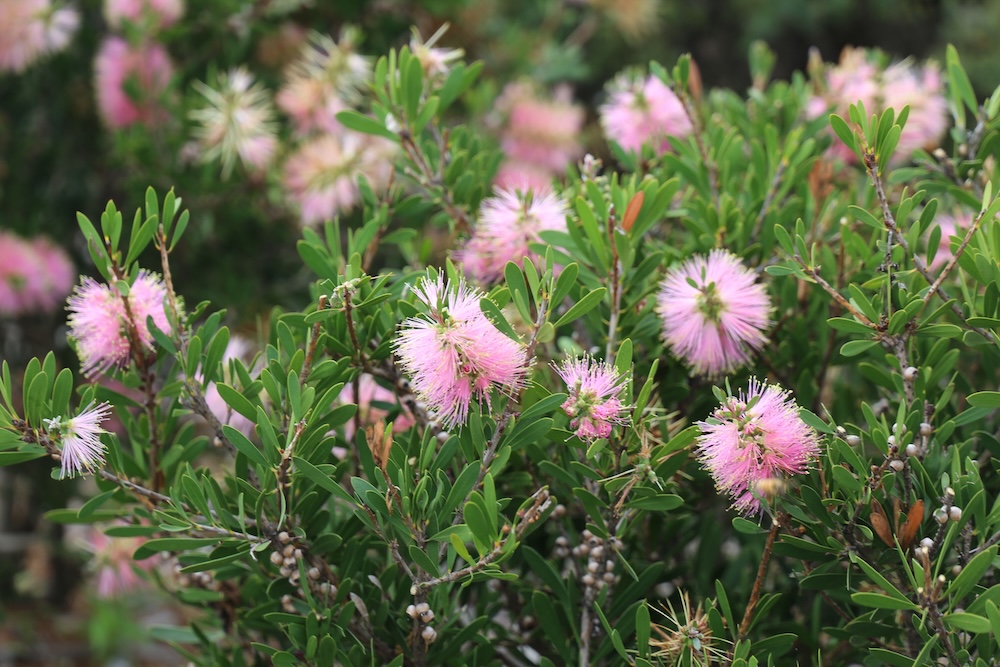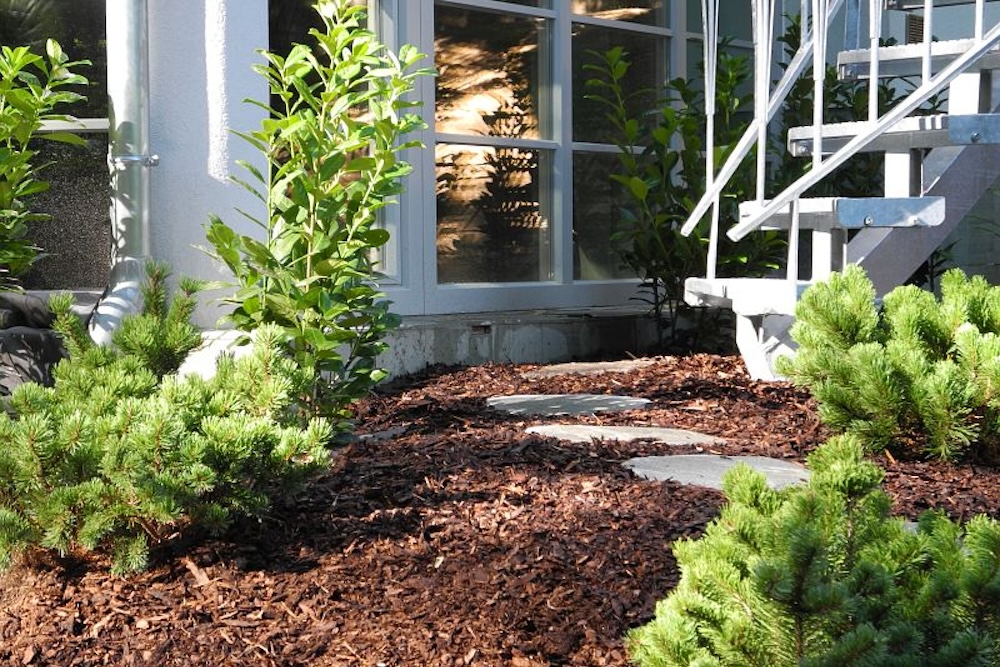Did you know that some of the plants we always thought were native to Australia are actually from Southern Africa?
Designing a Low Maintenance Garden
Have you ever wondered how much time and effort you could save with a low-maintenance garden? A garden that brings joy, beauty and tranquillity without the constant demands of your attention and energy?
A low maintenance garden is not only a time-saver but also a sustainable choice. It requires less water, fewer chemicals, and less frequent maintenance activities, without sacrificing beauty or function.
Let’s delve into the concept of a low-maintenance garden and discover how we can achieve one using intelligent design principles.

Understanding Your Garden
Before embarking on the journey of designing a low maintenance garden, you need to understand the unique conditions of your garden – especially soil type, light availability and climate.
Soil Type
Soil is the foundation of any garden. Different soil textures – sandy, clay-dominant, silty, chalky, and loamy – each have their characteristics and impact on plant health. For instance, sandy soils are well-draining but may lack vital nutrients, while clay soils are nutrient-rich but may have drainage issues.
Understanding your garden’s soil type helps you choose plants that will thrive in it, reducing the need for extra care and amendments. Soil can certainly be amended, but knowledge is power – you need to know what you have before you know what you need to do.
Light Availability
Light is a critical factor in plant growth. Some plants require full sun, while others thrive in partial shade or even full shade. By evaluating the amount of sunlight different parts of your garden get, you can select suitable plants, reducing the need for moving plants around or installing artificial light sources.
Remember that plants on a northern slope receive more light than plants on a southern slope in Australia because the sun is always slightly north in the sky as it travels along the equator.
Climate
Your local climate – including temperature ranges, rainfall patterns and seasonal changes –affects what plants will do well in your garden. Selecting plants adapted to your local climate reduces the need for extra watering, frost protection and other maintenance tasks.
Choosing the Right Plants
The cornerstone of a low maintenance garden is selecting the right plants. Certain types of plants require less care than others, making them ideal for a low maintenance garden.
Native Plants
Native plants can offer advantages as they’re naturally adapted to local conditions. However, the term “native” is relatively broad. Just because plants are native to one part of Australia doesn’t mean they’ll thrive in your backyard. Tropical rainforest plants won’t always thrive in temperate zones to the south.
Native cultivars can offer superior resilience and reduced maintenance compared to their natural species counterparts. They’re often bred to be more disease-resistant, drought-tolerant, and generally hardier.

Drought-Tolerant Plants
In areas with low rainfall or water restrictions, drought-tolerant plants are invaluable. They’re adapted to survive with minimal water, reducing your garden’s overall water needs.
Wet Feet-Tolerant Plants
In contrast, some gardens may have areas that experience periodic flooding or have heavy clay soils that stay wet. In such cases, plants that can tolerate “wet feet” are essential. These plants can survive and even thrive in waterlogged conditions.
Buffer Plants
Some plants offer the best of both worlds – they can tolerate both periodic flooding and drought. These buffer plants are particularly resilient options for Australian landscapes, where weather conditions can be unpredictable.
Slow-Growing Plants
The faster a plant grows, the more pruning it’ll need. This is especially relevant for hedges. If you pick the right hedges, you’ll only need to prune them once every one or two years. The only catch is that they can take longer to grow to the size you’re aiming for.
Perennials
Perennials, plants that live for several years, are the best options in a low maintenance garden. They require planting only once and provide beauty year after year. On the other hand, annuals and biennials, which complete their life cycle in one or two years respectively, add additional maintenance as they need to be replanted regularly.
Incorporating Low Maintenance Design Elements
Creating a low maintenance garden involves more than just selecting the right plants. Other design elements you incorporate can significantly influence how much time and effort your garden requires. Here are some strategies to consider.
Mulching
Mulching is a crucial practice in most gardens, but especially in a low maintenance one. Mulch helps conserve water by reducing evaporation from the soil surface. It also suppresses weeds, reducing the need for regular weeding.
However, if your mulch has too much carbon and not enough nitrogen, it can prevent water from filtering into the root zone. This imbalance can lead to waterlogged conditions on the surface and dry conditions below, neither of which are ideal for plant health. Simply put, carbon comes from the “brown” materials in mulch, such as bark chips, while nitrogen comes from the “green” materials in mulch, such as leaves.
The type of mulch you choose also matters. Chunky mulch is generally better for water filtration than fine mulch. The larger pieces create channels allowing water to seep through more easily, reaching the soil and plant roots where needed.

Irrigation Systems
When it comes to watering your garden, smart irrigation systems can be a game-changer.
Unlike manual watering, smart systems can be programmed to deliver the right amount of water at the right times. This automation saves time and ensures your plants get the water they need without waste.
Hardscaping
Hardscaping refers to the non-living elements of your garden, such as paths, walls, and patios. Certain hardscape features can add beauty to your garden while reducing the need for maintenance.
For example, a well-placed patio or deck can provide a focal point and gathering space, requiring little upkeep beyond occasional sweeping, blowing and/or pressure washing.
On the other hand, some hardscape features can add additional maintenance tasks. For instance, a water feature may require regular cleaning and maintenance checks to keep it running smoothly.
Regular Maintenance Tasks
Even a low maintenance garden requires some regular care to keep it looking its best. Here are some routine tasks that, done correctly, will minimise effort in the long run.
Pruning
Pruning is performed to maintain plant health and aesthetic purposes. Knowing how and when to prune can make a significant difference.
Remember your ABCs and DDDs:
Assess your plant and understand what the plant needs.
Bad branches are to be removed first. These are dead, damaged, and diseased branches.
Competing and crossing branches are those that are heading in the wrong direction; either rubbing other branches or they’re heading into the middle of the plant or straight up, competing with the main leading trunk.
Different plant habits require different pruning approaches – this is a lesson for another day, but you can’t treat a bird of paradise like a westringia.
There are three main types of pruning cuts: selective heading cuts, non-selective heading cuts, and removal cuts. Selective heading cuts involve cutting back to a side branch, promoting a more open growth habit. Non-selective heading cuts, or shearing, involves cutting back to no particular point and is often used for shaping hedges.
Removal cuts involve cutting a branch back to its point of origin to remove it entirely. There’s a lot more to pruning than most people think, so maybe just leave tree pruning for a qualified arborist to prevent shortening your tree’s lifespan.
Feeding and Watering
Feeding and watering plants correctly can promote healthy growth without overdoing it. Over-fertilisation can lead to excessive, weak growth and increase susceptibility to pests and diseases. Similarly, overwatering can lead to root rot and other problems. It’s better to water deeply and infrequently, encouraging deep root growth, than to water a little bit every day.
Some people will tell you to fertilise once per year, others will tell you to fertilise little and often. If you’re after a low maintenance option, you’re probably going to fertilise once or twice a year at most.
Weed Control
Effective weed control strategies can help keep your garden looking its best with minimal effort. Mulching, as mentioned earlier, is one effective strategy. Regular weeding before weeds set seed can also prevent the problem from getting out of hand.
Brushcutting tall weeds, spraying glyphosate to kill them, and then spraying a pre-emergent to prevent seeds sprouting is the easy way to control weeds, but that method isn’t in fashion any more due to the excessive chemical usage.
Pest Control
Effective pest control involves several strategies. Choosing resistant plants is the first step. Keeping plants happy with the right growing conditions is also crucial, as stressed plants are more susceptible to pests. Companion planting can deter pests, while encouraging natural enemies to help keep pest populations in check.
If these strategies aren’t enough, consider purchasing biological controls such as predatory insects which will fly away after they’ve fed if the habitat isn’t right for them. As a last resort, use chemicals, starting with the least harmful options such as white oil.
Daniel’s Wrap
Creating a low maintenance garden doesn’t mean you have to sacrifice beauty or enjoyment. By understanding your garden’s unique conditions and choosing the right plants and design elements, you can create a stunning outdoor space that requires minimal effort to maintain.
Don’t shy away from regular maintenance tasks – instead, learn how to do them efficiently to keep your garden looking its best with minimal effort.




This Post Has 0 Comments